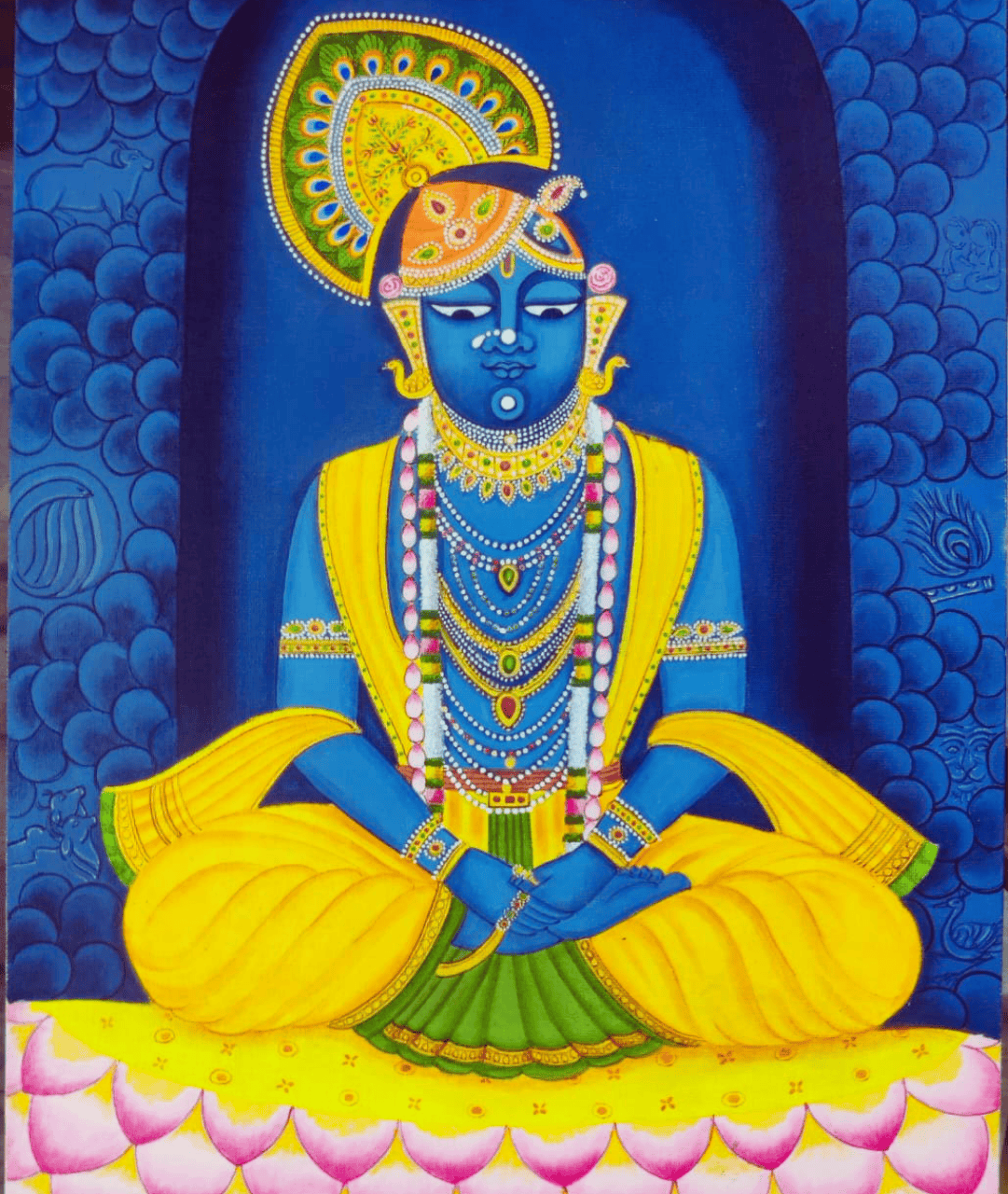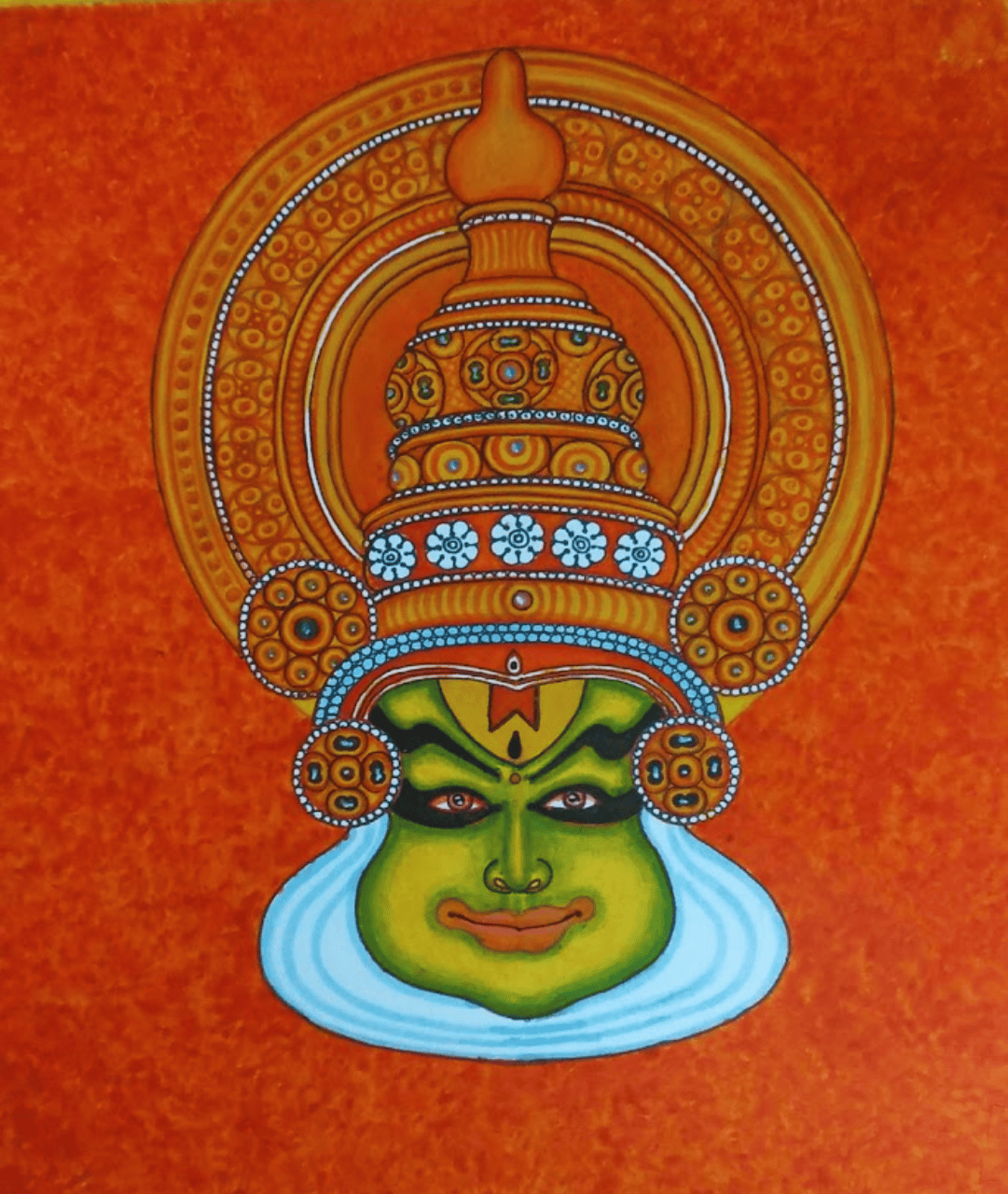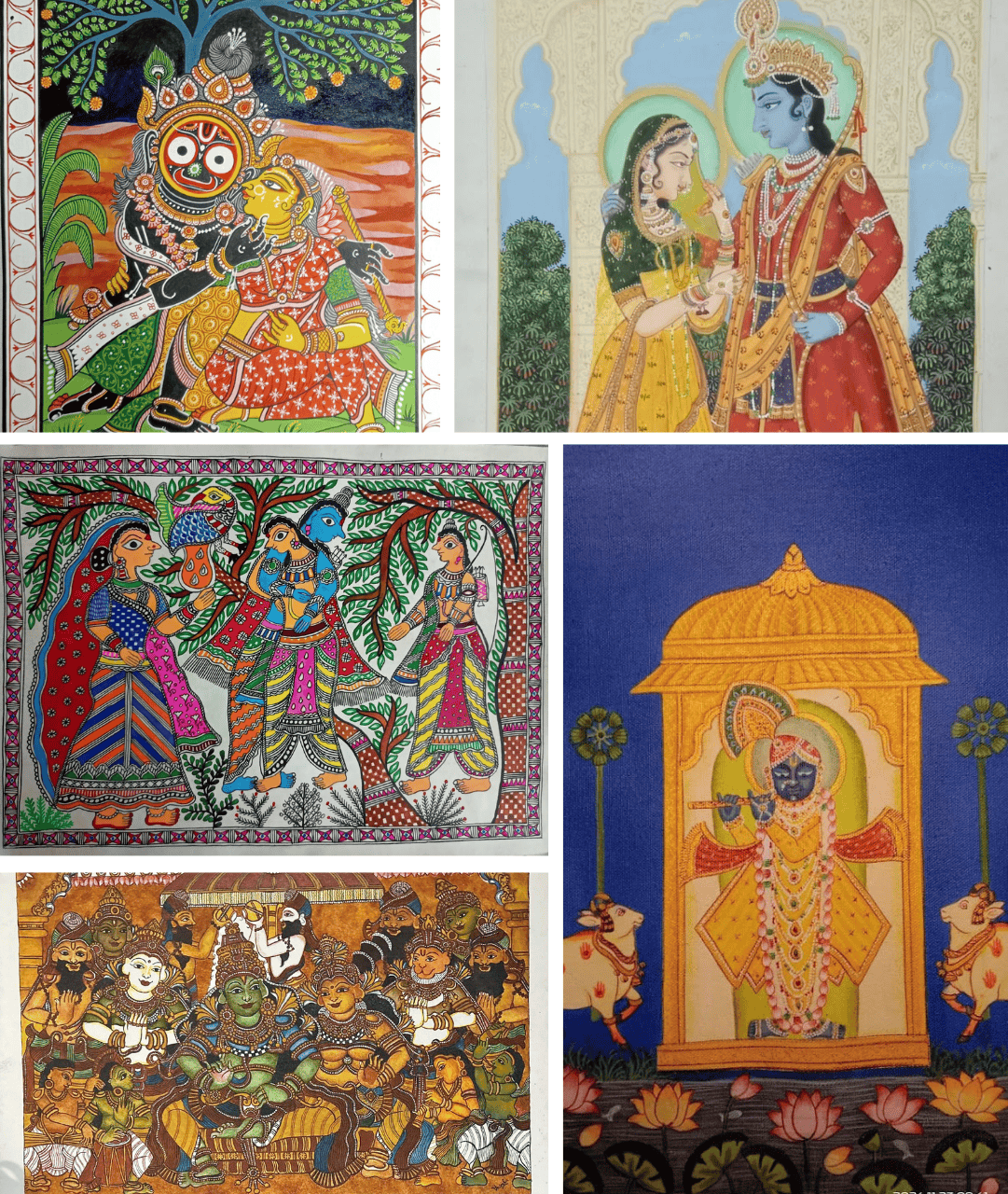A Deeper Look into Madhubani Painting
Madhubani painting, also known as Mithila art, is a celebrated traditional folk art with a rich history spanning over 2,500 years. Its origins are steeped in legend, with tales suggesting it dates back to the Ramayana era, when King Janaka is said to have commissioned artists to capture the wedding of his daughter, Sita, to Lord Rama. Traditionally, the art was a form of ritual expression, practiced by women on the walls and floors of their homes to mark festivals, ceremonies, and significant life events. The art form was passed down from mothers to their daughters, with its skills and designs preserved across generations.
The art form was largely unknown to the outside world until 1934. Following a major earthquake in the Mithila region, a British colonial officer named William G. Archer discovered these exquisite paintings on the interior walls of damaged houses while inspecting the area. Impressed by their intricate detail and aesthetic resemblance to works by artists like Miro and Picasso, he documented them, bringing Madhubani art to a global audience.

Distinctive Characteristics and Themes
Madhubani paintings are instantly recognizable for their vibrant colors, intricate details, and a complete lack of empty space. The paintings are characterized by bold, clean line drawings that are filled with natural pigments. If any gaps remain, they are filled with delicate patterns of flowers, birds, geometric shapes, and animals, creating a dense, visually stunning composition.
The themes of Madhubani art are deeply rooted in nature and mythology. Common subjects include Hindu deities like Krishna, Rama, Shiva, Durga, and Lakshmi, as well as scenes from epic stories. The art also celebrates the natural world, with recurring motifs of the Sun, Moon, the sacred Tulasi plant, and various animals and birds.
The artistry is not just about the final image; it is also about the process. Artists traditionally create their own brushes from materials like bamboo twigs and use natural colors derived from plants and minerals. For instance, black is made from soot, red from the kusum flower, and yellow from turmeric or pollen.
The Evolution of Madhubani Art
While its roots are in wall murals, the contemporary practice of Madhubani art on paper began out of necessity. In the 1960s, a severe famine struck Bihar. To help the women of Mithila earn a livelihood, they were encouraged to transfer their skills to a more portable medium. This pivotal shift not only provided a source of income but also allowed their artistry to reach a wider audience, transforming a traditional craft into a viable profession.
Madhubani art is categorized into five distinctive styles: Bharni, Kachni, Tantrik, Godna, and Kohbar.

Bharni Painting: The Art of Filled Colors
Bharni is a distinct style of Madhubani or Mithila painting, a traditional folk art originating from the Mithila region. Its name, derived from the Hindi word for "filling," perfectly describes its defining feature: the entire canvas is filled with vibrant, bold colors. Artists use a rich palette, predominantly blue, green, red, pink, and orange, to fill in the figures. These paintings primarily depict mythological themes, featuring gods, goddesses, and epic scenes from Hindu literature. The figures are created with thick, bold black outlines, which makes the vibrant colors stand out even more. Every element in a Bharni painting is rich with cultural and spiritual symbolism, with even the spaces between main figures filled with intricate patterns of flowers, birds, and geometric designs, ensuring a dense and visually stunning composition. This style was historically practiced by Brahmin women, who, with their deep knowledge of sacred texts, brought religious narratives to life through their art.

Kachni Painting: The Art of Lines
Kachni Painting is a distinctive style of Madhubani (or Mithila) art that hails from the culturally rich Mithila region of Bihar, India. The term "Kachni" translates to "line art," which perfectly captures the essence of this intricate form. Unlike the more colorful Bharni style, Kachni art is characterized by its use of monochrome or limited color palettes—typically black ink, occasionally accented with red, green, or yellow.
What truly sets Kachni apart is its remarkable line work. Artists employ fine, precise lines, cross-hatching, and tiny dots to create stunning patterns, depth, and texture. Instead of relying on bold blocks of color, the beauty of Kachni lies in its meticulous detailing and the rhythmic flow of its lines. Themes often revolve around Hindu mythology, nature, animals, and birds—all brought to life with a quiet elegance and artistic finesse. This style demands a steady hand and immense patience, as every element is rendered with exceptional care and precision, making Kachni a true celebration of craftsmanship and tradition.
What truly sets Kachni apart is its remarkable line work. Artists employ fine, precise lines, cross-hatching, and tiny dots to create stunning patterns, depth, and texture. Instead of relying on bold blocks of color, the beauty of Kachni lies in its meticulous detailing and the rhythmic flow of its lines. Themes often revolve around Hindu mythology, nature, animals, and birds—all brought to life with a quiet elegance and artistic finesse. This style demands a steady hand and immense patience, as every element is rendered with exceptional care and precision, making Kachni a true celebration of craftsmanship and tradition.

Kohbar Painting: Art of the Nuptial Chamber
Kohbar painting, a sacred and symbolic style of Madhubani art, is traditionally created on the inner walls of the bridal chamber in Bihar's Mithila region. This art form, whose name refers to the nuptial room, is designed to bless newlyweds with fertility, prosperity, and a long life together. The compositions are rich with symbolism, centered around the lotus flower, which represents feminine energy and love. Other key motifs include bamboo groves associated with male fertility, as well as depictions of fish, birds, snakes, and the cosmic union of deities such as Shiva and Parvati. Historically painted by women using natural colors on freshly plastered walls, these vibrant, detailed artworks are far more than mere decoration; they are a visual prayer for conjugal harmony. While now found on canvas and paper, Kohbar paintings continue to be an essential part of wedding rituals, celebrating cultural values through their timeless artistry and devotional storytelling.

Godna Painting: The Art of Identity and Resilience
Godna painting is a captivating and lesser-known style of Madhubani art that originated from the ancient tattooing traditions of Dalit communities, particularly the Dusadhs, in Bihar's Mithila region. The word "Godna" literally means "tattoo," highlighting its deep connection to body art and cultural identity.
Unlike the more famous Bharni and Kachni styles, which often depict Hindu gods, Godna art emerged from a place of social exclusion. Denied the right to portray upper-caste deities, these communities created their own artistic language. Their art focuses on folk heroes like Raja Salhesh, ancestral spirits, and scenes of daily life.
Visually, Godna paintings are characterized by intricate, repeating patterns of concentric circles, fine lines, and tribal motifs, all directly inspired by traditional tattoo designs. While early pieces were rendered solely in black ink, the style has since evolved to include vibrant, earthy colors and bold contrasts. More than just a form of decoration, Godna art is a powerful act of storytelling—an expression of resistance, resilience, and pride that transforms ancient tattoo designs into compelling visual narratives. It is a celebration of identity, memory, and the enduring power of creative expression.

Tantrik Madhubani Painting: A Mystical Branch of Art
Tantrik Madhubani painting is a powerful and mystical branch of the traditional Madhubani art form, deeply rooted in ancient Tantric philosophy. This style focuses on sacred geometry, ritual symbols, and divine figures used in spiritual practices and meditation.
Unlike other Madhubani styles, Tantrik art is not just a visual creation; it is believed to carry spiritual energy and serve as a tool for inner awakening. Common motifs include yantras, chakras, and deities like Kali, Durga, Shiva, and Ganesha. Each element is rich with symbolism, connected to the universe, energy centers, and cosmic forces.
The paintings are characterized by bold lines, vibrant colors, and symmetrical patterns, which create a mesmerizing visual rhythm. Divine figures often have multiple arms, heads, or eyes, symbolizing their divine power and omnipresence. Mantras, lotus patterns, and other ritual symbols are intricately woven into the artwork.
Traditionally practiced by Brahmin women with knowledge of sacred texts, this style was used for ritual worship and spiritual protection. Today, Tantrik Madhubani art continues to be a rare expression of mysticism, devotion, and sacred storytelling, blending artistic beauty with deep metaphysical and religious significance.


























